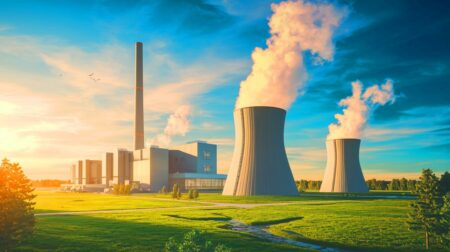The United States has pledged to reduce its greenhouse gas emissions by half within a decade in what is to be a massive task, yet given effective policies, scientists stress, it can be achieved.
Writing in a study published in the journal Science, a team of researchers explains that their findings, whose conclusions are based on six separate technological and economic models of domestic energy systems, have yielded four major insights.
First, because most of the country’s emissions result from power generation and transportation, clean energy in the electricity grid will need to be doubled to 80% from the current share of 40% in order that greenhouse gas emissions can be halved by 2030. At the same time, most vehicles sold will need to be electric along with significant emission reductions in buildings and industries as well.
Second and third, increased costs from powering grids with renewables will not be a factor thanks to ongoing advances in wind, solar, and energy storage technologies. In fact, the use of renewables and electric vehicles could save each U.S. household up to $1,000 per year. Hence, the main barrier to increases in clean energy use will not be cost but policies, which is why a “coordinated policy response between states and the federal government will be necessary to succeed.”
And finally, in an added benefit, a clean-energy transition will reduce current rates of air pollution considerably, preventing up to 200,000 premature deaths and saving up to $800 billion in environmental and health costs by 2050. Many of the health benefits will occur in disadvantaged and low-income communities disproportionately exposed to emissions from vehicles, power plants and factories.
“Our study provides the first detailed roadmap for how the United States can reach its 50% greenhouse gas emissions-reduction target by 2030,” says John Bistline, program manager at the Energy Systems and Climate Analysis Group of the Electric Power Research Institute and the study’s lead author.
“This will require tripling the pace of historic carbon reductions, an ambitious but achievable target if stakeholders collaborate across all sectors,” Bistline explains. “By comparing results across six independent models, we provide greater confidence about the policies and technology deployment needed to achieve near-term climate goals, laying the groundwork for an affordable, reliable, and equitable net-zero future.”
By 2030, wind and solar could provide the bulk of the targeted rate of 80% for clean electricity, but in order for that to happen the amount of renewable capacity built each year will need to be doubled each year while speeding up the transition to electric vehicles, according to Nikit Abhyankar, a scientist in the Electricity Markets & Policy Department of Lawrence Berkeley National Laboratory. .
At the same time, generating the remaining 20% of grid power won’t require the creation of new fossil fuel generators because existing gas plants, in tandem with hydropower and nuclear power plants, will suffice to meet demand during periods of very low renewable energy generation or very high electricity demand.
“And if the right policies are in place, the coal and gas power plants in the country that currently provide the majority of the nation’s electricity would recover their initial investment, thereby avoiding risk of cost under-recovery for investors,” Abhyankar observes.
“Since announcing the nation’s emissions reduction pledge at the 2021 United Nations climate conference, the United States has taken steps in the right direction,” the scientist adds. “But a lot still needs to happen. What we are hoping is that this study will give some level of a blueprint of how it could be done.”
Did you like it? 4.5/5 (24)








